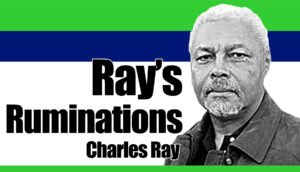
The island of Siquijor, which has now become part of Negros Island Region, has been in the spotlight of late because of its erratic, even intermittent, power supply. But, despite this inconvenient situation, domestic and international tourists still flock to this island-province popularly known as Isla del Fuego (Island of Fire).
It must be Siquijor’s mystical wonders, among others, that have drawn locals and foreign visitors to the place, not to mention its many myths and legends.
As Siquijor soon celebrates Araw ng Siquijor by next month, we take cognizance of its rich heritage, replete with stories and legends. One such interesting vignette is that of the municipality of Larena, one of only six municipalities of the island-province.
Legends have it that Barangay Helen in the municipality of Larena was formally called Datag due to its land formation which was a valley. It was surrounded by water and big trees. The trees that grew on this place were bangkal, dita, combat, and daluot. Nipa was also found in this place before.
The former name Datag was changed to Helen in honor of the late Helen Larot Omictin, first lady of the province of Siquijor during the incumbency of Governor Eulogio Omictin Jr. Like the literary character, Helen of Troy, Siquijor’s beloved Helen was comparable to the beauty of the former for both ladies’ faces “could launch a thousand ships.”
However, there was more than beauty that met the eyes of the beholder because Helen of Siquijor was not only beautiful, but kindhearted and sympathetic to the masses. Thus, she earned the great respect not only of Larenians, but also of all Siquijodnons so much that she was “Nang Helen” to all.
Another legend is told about North and South Poblacion in Larena. In the book, Siquijor’s Mystical Wonders, it was related that once upon a time, the term barangay originally referred to a sailboat that brought migrants from other countries into Philippine shores. These countries had close ties with the Philippines.
During the prehistoric trade and cultural exchange, emigration from one place to the other was rampant in the island. A barangay was not yet established at that early stage because the place was located at the heart of the town, which was known as Canoan. Canoan was rightfully interpreted in the vernacular dialect, kan-anan, meaning an eating place.
The place was noted for its abundant production of corn that was why people from nearby islands came over to buy or to help in the harvesting of crops. The inhabitants’ population grew bigger until such time the name Canoan was changed to Larena in honor of the late Demetrio Larena who served as governor of the province of Siquijor.
Later, the creation of barrios in the province was enacted. The poblacion was one of them. The sister barangay was South Poblacion. Both barrios, North Poblacion and South Poblacion, were included in 23 barangays of which North Poblacion was considered the commercial center of the town.
Another legend is told about Sandugan which, according to the older folks, came from the longer word Sanduganan, which meant fishing ground of schools of fish. During the early days, various kinds of fish could be caught along the seas of the barangay. As fishing ground, the place offered a lucrative means of livelihood to the residents through fishing. As male residents explored the sea to catch different varieties of fish during nighttime, female counterparts slumbered in their homes to generate energy in order to be able to sell fish to consumers in the neighboring barrios and as far as the town proper. These activities became regular scenarios in Barangay Sandugan. Also, what used to be Sanduganan before became Sandugan in the long run.
In a certain barrio of Larena, there thrived an unusual giant tree called Taculing. It became the attraction of the place. People from near and far visited the barrio for the purpose of gazing at the gigantic tree for their eyes’ delight. This tree made the place famous because its name was repeatedly mentioned by the people who happened to visit the place. During that time, the place had no definite name, so when strangers and visitors asked the residents about the identity of their barrio, they had n o precise answer.
With this dilemma, many residents felt the urgency of convening themselves under the leadership of their teniente del barrio in order to determine the official name of their place. During the brainstorming phase, various suggestions surfaced; however, in the final division of the house, the name Taculing garnered the highest number of votes. Since then majority of the barrio folks has used Taculing as the official name of the place.
“Siquijor’s legends, while historic and oftentimes based on oral history, make the island more intriguing because of its mysticism. People often wonder about the veracity of these stories, but whether they are true or not, the fact remains that this is what makes Siquijor a place to visit and explore again and again,” shared Dr. Renalyn Bantawig, dean of the College of Arts and Sciences of Siquijor State College, and a homegrown Siquijodnon who has done intensive research on these legends. | NWI




